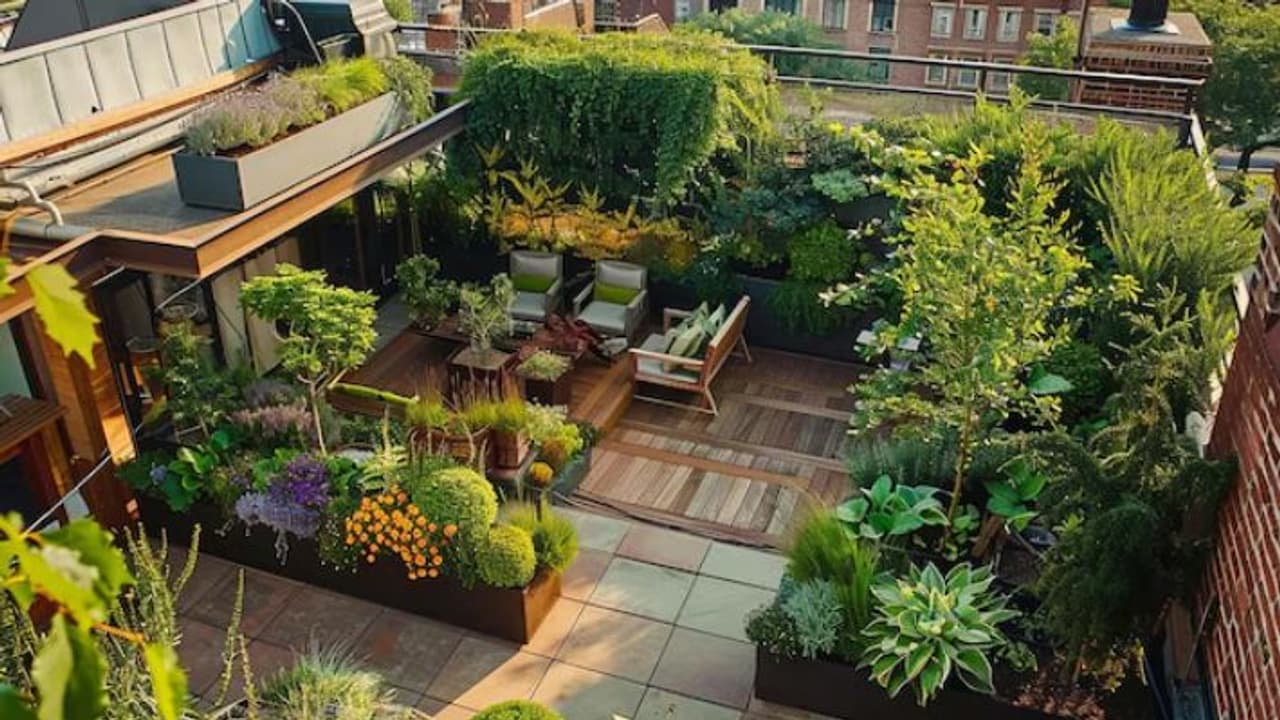Apartment edible gardening is an exciting way to bring freshness and sustainability into your daily life. With the right location, plant choices, and care routines, you can cultivate a thriving mini-farm even in limited spaces.
Living in an apartment doesn't necessarily mean sacrificing fresh, homegrown fruits and vegetables. Edible gardening is a green, fulfilling way of cultivating herbs, vegetables, and fruits in your own mini-environment. Whether it's a balcony, windowsill, or mini-patio, with right techniques, you too can enjoy the bliss of harvesting your own harvest.

Step by step process of Edible Gardening:
Step 1: Choose the Right Place Sunlight Exposure
The quantity of natural light a place receives in a day, which is necessary for plants' health.
Microclimate – The climate within a small area of your apartment, influenced by shade, humidity, and air movement.
Step to Begin: Identify a sunny place with a minimum of 4-6 hours of direct light each day.
If there's limited natural light, employ grow lights to supplement plant growth.
Plant your plants in a place with good ventilation to prevent fungal disease.
Step 2: Select Suitable Edible Plants Learning Terms:
Hardy Plants – Plants that will grow well in a range of conditions with little maintenance.
Fast-Growing Crops – Vegetables and herbs that grow quickly, ideal for beginners.
Best Apartment Gardening Plants: Herbs: Basil, mint, parsley, cilantro, and chives.
Vegetables: Tomatoes, spinach, lettuce, peppers, and radishes.
Fruits: Strawberries, lemons (dwarf variety), and figs.
Choose plants that will fit your space and experience level—low-maintenance crops are ideal for novices.
Step 3: Choose the Correct Pots Vocabulary to Learn: Drainage Holes
Small holes on the bottom of a container to prevent waterlogging.
Self-Watering Pots – Containers that retain water and reduce frequent watering requirements.
Container Selection Tips: Use pots with holes to keep roots from rotting.
Try vertical gardening using hanging pots or wall planters to save space.
Use recycled containers like old bottles or crates for an eco-friendly solution.
Step 4: Prepare the Potting Mix Terms to Know: Potting Mix
Soil, compost, and nutrients blended specially for container gardening.
Organic Compost – Natural fertilizer made of decomposed plant waste, which improves soil health.
How to Prepare a Healthy Soil Mix: Use good quality potting mix with proper aeration and drainage.
Add organic compost or natural fertilizers to enrich the soil.
Add coconut coir or perlite to enhance water holding capacity and root development.
Step 5: Watering & Maintenance Learning Terms Overwatering
Excess water leading to plant stress or fungal infection.
Mulching – Mulch of organic material distributed on soil to retain water and regulate heat.
Best Practices: Water frequently but not excessively—always check soil moisture before watering.
Add mulch (dried leaves or coconut husk) to maintain dampness.
Rotate plants occasionally to give them equal sunlight.
Step 6: Pest Management & Natural Remedies Understanding Terms:
Companion Planting – Placing certain plants together to repel pests naturally.
Neem Oil – Natural product used to protect plants from pests and fungal infections.
How to Keep Your Edible Garden Safe: Use natural pest repellents like neem oil or garlic spray. Plant companion crops (e.g., basil surrounding tomatoes) to repel bugs.
Periodically examine leaves and destroy infested plants immediately.
Step 7: Harvest & Storage Understanding Terms Ripening
Final growing stage where vegetables and fruits are most flavorful and textured.
Shelf Life – Duration of time produce remains fresh when harvested until it rots.
Effective Harvesting: Harvest greens and herbs regularly to encourage regrowth.
Harvest vegetables when mature for best taste and nutrition.
Keep produce in eco-friendly packaging or dry or freeze extra harvests.
Final Words: Having Your Own Vegetable Garden in an Apartment Edible apartment gardening is a enjoyable way of adding freshness and sustainability to your daily life. With the right spot, plants, and maintenance routine, you can cultivate a successful mini-farm even in small spaces.


